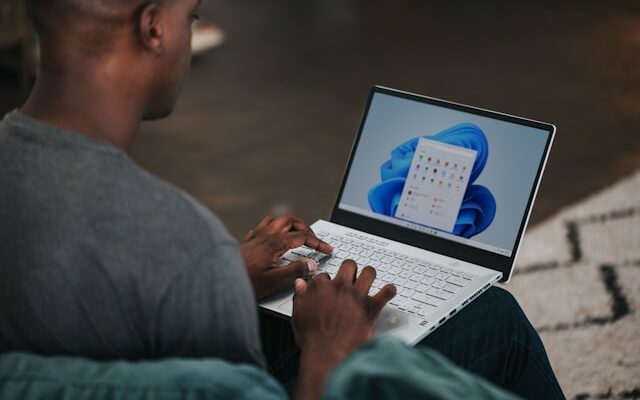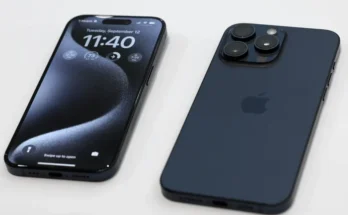Welcome to our comprehensive guide to Windows 11! In this article, we will walk you through various aspects of the new operating system, from upgrading your computer to customizing the Start menu and changing the wallpaper.
We will also explore exciting features like Snap Layouts, Widgets, and DirectStorage, as well as provide tips on troubleshooting common issues. So let’s dive in and discover the world of Windows 11!
Upgrading to Windows 11
Upgrading your computer to Windows 11 is a straightforward process.
First, ensure that your device meets the minimum system requirements. Then, check for updates through Windows Update.
If your device is eligible, you will see an option to upgrade to Windows 11.
Follow the on-screen instructions, and soon you’ll be enjoying the new features and enhancements that Windows 11 has to offer.
Customizing the Start Menu
The Start menu in Windows 11 has a fresh new look.
To customize it, simply right-click on the Start button and select “Settings.”
From there, you can personalize the Start menu by choosing different layouts, resizing the tiles, and even pinning your favorite apps for quick access.
Make your Start menu truly your own by arranging it to suit your workflow and preferences.
Changing the Wallpaper
Personalizing your desktop background is a great way to make Windows 11 feel like your own.
To change the wallpaper, right-click on the desktop and select “Personalize.”
From there, navigate to the “Background” tab and choose your desired image or slideshow.
You can also select different wallpapers for each monitor if you have a multi-monitor setup.
Let your creativity shine through with a wallpaper that reflects your style.
Using Snap Layouts
Snap Layouts is a new feature in Windows 11 that makes multitasking a breeze.
To access and use Snap Layouts, simply drag a window to the edge of your screen.
You will see a preview of available layouts, allowing you to easily snap windows into place.
Whether you need to work on multiple documents side by side or keep an eye on your favorite streaming service while browsing the web, Snap Layouts will help you stay productive and organized.
Organizing and Creating Virtual Desktops
Virtual desktops are a powerful tool for organizing your workflow.
To create a new virtual desktop, click on the Task View button in the taskbar and select “New Desktop.”
You can then switch between desktops by using the Task View or the keyboard shortcut Windows key + Ctrl + Left/Right arrow.
Use virtual desktops to separate work and personal tasks, or to group related applications together for easier navigation.
Enabling and Using Widgets
Widgets provide you with at-a-glance information and personalized content right on your desktop.
To enable and use Widgets, click on the Widgets button in the taskbar or press the Windows key + W.
From there, you can choose from a variety of widgets, including weather, news, calendar, and more.
Customize your Widgets experience by rearranging, resizing, or adding new widgets to suit your interests and needs.
Pinning Apps to the Taskbar
Pinning your favorite apps to the taskbar allows for quick and easy access.
To pin an app, simply right-click on it in the Start menu or the taskbar, and select “Pin to taskbar.”
You can rearrange the order of the pinned apps by dragging and dropping them into your preferred position.
Keep your most-used applications just a click away, and streamline your workflow with a personalized taskbar.
Adjusting System Settings
Windows 11 offers a wide range of system settings that you can customize to suit your preferences.
From display and sound settings to power and sleep options, you have control over various aspects of your device.
To access and adjust system settings, click on the Start button, select “Settings,” and navigate to the desired category.
Explore the options available and make your device work the way you want it to.
Personalizing the Taskbar
The taskbar in Windows 11 can be personalized to enhance your productivity.
Right-click on the taskbar and select “Taskbar settings” to access various customization options.
You can choose to center the taskbar icons, show or hide the taskbar on multiple displays, and even enable or disable the new “News and Interests” feature.
Tailor the taskbar to your liking and make it an integral part of your Windows 11 experience.
Setting Up and Using the Microsoft Store
The Microsoft Store in Windows 11 is your gateway to a vast collection of apps, games, and entertainment. To set up and use the Microsoft Store, simply click on the Start button and select “Microsoft Store.” From there, you can browse and install apps, manage your subscriptions, and discover new content. Take advantage of the Microsoft Store to explore and enhance your Windows 11 experience.
Uninstalling or Removing Apps
If you no longer need an app or want to free up space on your device, uninstalling or removing it is a straightforward process. Right-click on the app in the Start menu or the taskbar and select “Uninstall” or “Remove.” Alternatively, you can go to Settings > Apps > Apps & features to manage and uninstall apps. Keep your device clutter-free by removing apps that you no longer use or need.
Checking for and Installing Windows Updates
Keeping your device up to date is essential for security and performance. To check for and install Windows updates, go to Settings > Windows Update. Windows 11 will automatically check for updates and install them in the background. You can also manually check for updates or configure your device to install updates at a convenient time. Stay current with the latest features and improvements by regularly updating your Windows 11 device.
Enabling and Using DirectStorage for Gaming
DirectStorage is a game-changing feature in Windows 11 that significantly reduces load times and improves gaming performance. To enable and use DirectStorage, ensure that you have a compatible storage device and the latest graphics drivers. DirectStorage will automatically be utilized by games that support it, providing you with faster load times and a smoother gaming experience. Get ready to level up your gaming with DirectStorage on Windows 11.
Using the New Microsoft Edge Browser
Windows 11 comes with the new Microsoft Edge browser, which offers a fast, secure, and seamless browsing experience. Launch Microsoft Edge from the taskbar or the Start menu, and enjoy features like tab grouping, vertical tabs, and improved performance. Sync your browsing data across devices and personalize your browsing experience with extensions and themes. Discover the power of the new Microsoft Edge on Windows 11.
Troubleshooting and Fixing Common Issues
If you encounter any issues or errors in Windows 11, there are several troubleshooting steps you can take. From checking for updates to running the built-in troubleshooters, Windows 11 provides tools to help you diagnose and resolve common problems. You can also seek assistance from the Windows community or contact Microsoft Support for further guidance. Don’t let technical difficulties hold you back – troubleshoot and fix common issues in Windows 11 with ease.
Enabling and Configuring Windows Hello
Windows Hello offers a convenient and secure way to log in to your Windows 11 device using facial recognition or fingerprint authentication. To enable and configure Windows Hello, go to Settings > Accounts > Sign-in options. Follow the on-screen instructions to set up Windows Hello and enjoy a password-free login experience. Say goodbye to typing passwords and say hello to Windows Hello on Windows 11.
Customizing System Sounds
Personalize your Windows 11 experience by customizing system sounds. To do this, go to Settings > System > Sound. From there, you can choose different sounds for various system events, such as notifications, alerts, and shutdown. You can also adjust the volume and sound output settings to suit your preferences. Make Windows 11 sound uniquely yours with custom system sounds.
Managing and Organizing Files with File Explorer
File Explorer in Windows 11 provides a powerful tool for managing and organizing your files. With its new streamlined design, you can easily navigate through your files and folders, search for specific items, and perform actions like copy, move, and delete. Take advantage of features like Quick Access and File Explorer’s ribbon menu to efficiently manage and organize your files in Windows 11.
Switching Between Light and Dark Modes
Windows 11 offers both light and dark modes, allowing you to choose the visual theme that suits your preferences. To switch between light and dark modes, go to Settings > Personalization > Colors. From there, you can select the desired mode or even set Windows to automatically switch based on the time of day. Customize the visual appearance of Windows 11 and work comfortably in the mode that best fits your needs.
Creating and Using a Microsoft Account
A Microsoft account provides enhanced features and seamless integration across devices. To create and use a Microsoft account in Windows 11, go to Settings > Accounts > Your info. From there, you can sign in with an existing Microsoft account or create a new one. Enjoy the benefits of a Microsoft account, such as syncing settings, accessing the Microsoft Store, and collaborating with others in Microsoft 365 apps.
Conclusion
Congratulations! You have reached the end of our comprehensive guide to Windows 11. We hope that this article has provided you with valuable insights and instructions on various aspects of the new operating system. Whether you are upgrading your computer, customizing the Start menu, or exploring exciting features like Snap Layouts and Widgets, Windows 11 offers a range of options to enhance your productivity and personalize your experience. So go ahead, dive into the world of Windows 11, and make it your own!




